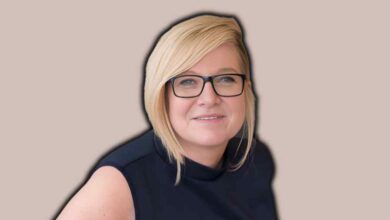Alison Ogilvie: The Woman Soaring Above Seas to Save Whales

In the world of marine conservation, few names shine as brightly as Alison Ogilvie. A dedicated NOAA marine mammal observer, Alison has devoted her life to protecting one of the ocean’s most endangered giants—the North Atlantic right whale. From flying above the open sea in aircraft to skimming the waves aboard research vessels, Alison’s role is not only critical to marine science but inspirational to all who value our planet’s fragile ecosystems.
Who Is Alison Ogilvie?
Alison Ogilvie is a marine biologist and aerial observer currently working with NOAA’s Northeast Fisheries Science Center (NEFSC) within the Whale Ecology Branch. Her expertise focuses on marine mammal research, especially involving aerial and shipboard surveys of the critically endangered North Atlantic right whale.
She is not just a scientist—she is a guardian of the ocean. Whether capturing rare sightings from high above or meticulously analyzing whale callosity patterns in lab environments, Alison’s hands-on approach reflects her deep commitment to marine conservation.
Educational Background
Alison holds a Bachelor of Science degree in Biology from the University of Victoria in Canada. Her academic journey laid a strong foundation for her practical marine research work. With courses focused on marine ecology, wildlife biology, and environmental science, she graduated ready to tackle the complexities of marine life.
Before joining NOAA, Alison gathered extensive experience working as a marine naturalist and a research assistant in humpback and right whale observation programs. Her early exposure to whale tracking and photo identification prepared her for the high-stakes responsibility she now carries at NOAA.
What Does a Marine Mammal Observer Do?
Alison Ogilvie’s job might sound straightforward—but it’s anything but simple. Her role spans across three major components:
- Aerial Surveys Alison often boards Twin Otter aircraft for long, sometimes grueling aerial surveys. These flights scan hundreds of miles of ocean, searching for signs of right whales. Observers like Alison peer through bubble windows for hours, often in cold, turbulent air, recording sightings and behaviors of marine mammals.
- Shipboard Research When not in the air, Alison joins NOAA’s ship-based research cruises. These missions involve drone surveillance, photo identification, environmental sampling, and biopsy collection. Every sighting helps build a clearer picture of right whale populations, their health, and their migratory habits.
- Data Processing & Coordination Back on land, Alison’s job continues. She sifts through high-resolution photos, matches whale callosity patterns to known individuals, and enters data into NOAA’s marine mammal databases. Her work supports real-time conservation decisions and long-term population monitoring.
Key Achievements in Whale Conservation
Alison has participated in numerous landmark sightings and conservation milestones:
- In 2024, she was among the first to spot a rare pair of orcas during a right whale survey.
- In early 2025, she documented “Accordion,” a known female right whale, alongside her first calf—a promising sign for the dwindling species.
- Her work has directly contributed to NOAA’s data used for policy enforcement under the Endangered Species Act.
Each successful sighting and dataset improves humanity’s chance of saving the North Atlantic right whale from extinction.
The Importance of North Atlantic Right Whale Research
The North Atlantic right whale population is estimated to be fewer than 360 individuals. With threats ranging from entanglements in fishing gear to vessel strikes, the need for real-time, accurate data is more pressing than ever.
Alison’s work helps inform:
- Marine Traffic Regulations: Limiting boat speeds in whale hotspots
- Fishing Industry Guidelines: Reducing risks of entanglement
- Habitat Protection Efforts: Identifying key feeding and breeding grounds
Without professionals like Alison, these endangered giants could silently disappear from our oceans.
Challenges of the Job
Being a marine mammal observer is far from glamorous. Alison routinely faces extreme weather conditions, long days at sea or in flight, and high-stakes decision-making.
- Fatigue: Extended flights with hours of constant observation
- Emotional Strain: Witnessing injured or deceased whales
- Data Pressure: Ensuring accuracy in rapidly changing environments
Yet, despite the challenges, Alison remains steadfast. Her resilience is a testament to her passion and professionalism.
A Personal Touch: Life Beyond the Binoculars
While her professional life soars with purpose, Alison also values simplicity. She enjoys gardening, skiing, and long walks with her dogs on Cape Cod’s scenic beaches. These quiet moments fuel her stamina and offer a break from the intensity of her conservation mission.
Her colleagues describe her as both “brilliant” and “down-to-earth”—a rare blend that makes her a respected leader in the field.
The Ripple Effect: Inspiring the Next Generation
Alison Ogilvie’s story is more than a tale of scientific dedication—it’s a roadmap for aspiring marine biologists. Her career shows that with passion, education, and perseverance, one person can significantly impact the fight against extinction.
Students, conservationists, and policy-makers alike look to professionals like Alison for guidance. Her work doesn’t just protect whales; it shapes the future of marine stewardship.
What’s Next for Alison Ogilvie?
With NOAA expanding its drone programs and real-time marine tracking technologies, Alison’s future looks even more promising. Her skills will be pivotal in integrating AI-assisted drone observations and advancing non-invasive whale health assessments.
In coming years, we can expect her role to evolve into leadership within NOAA’s broader ecosystem modeling projects. But one thing will remain constant: Alison’s dedication to the whales she has sworn to protect.
Conclusion
Alison Ogilvie is a name that should be celebrated—not just in scientific circles, but across the globe. In a world where environmental destruction often outpaces conservation, her work offers a beacon of hope.
Her life demonstrates how one person, equipped with the right tools, training, and heart, can make a tangible difference. As the oceans continue to shift under the weight of climate change and human activity, we will need many more like her.



